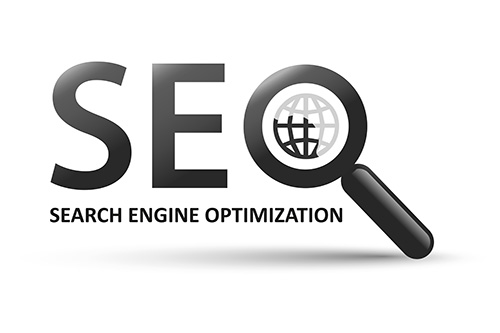In the last post, we looked at two common formats for automated e-mail marketing campaigns: the mini e-course and the weekly tips ezine. If you missed the last post, you can review the automated e-mail marketing models here.
Once you’re familiar with two of the basic types your automated e-mail marketing campaign can take, select a campaign type and read on to learn about the best strategies for getting started with an automated e-mail campaign.
Starting Your E-mail Marketing Campaign
The First Email is KEY!
The most important e-mail, by far, when you’re creating an automated e-mail marketing strategy is the automated email that your new readers receive whenever they opt-in to one of your mailing lists. Because this e-mail is so important to the relationship you build with your followers, it’s critical that a few key elements are included in your first message with any potential new customer.
The first e-mail is also your best chance of generating a sale with a new follower. So you want to make sure you’re promoting your main product in the best possible way.
My experience has been that most sales are generated within the first three e-mails of any automated e-mail marketing campaign… with the bulk of the sales coming from the first e-mail. It’s really not surprising when you think about it: your new follower is likely to be most interested in your advice the day they decide to sign up for your mailing list. That’s when their interest in your product or service is at its highest.
The Introductory E-mail
The first e-mail in your automated e-mail marketing campaign should be an introductory message sent to your readers the day they subscribe. No matter what type of mailing list you have, whether it’s an automated mini-course or weekly tips or even an automated blog broadcast that you’ve set up using aWeber’s blog broadcast feature, you need to include an introductory message to your new reader.
The introductory e-mail should accomplish three specific goals:
1. Establish a relationship with your new follower
2. Outline expectations and fulfill any promises (what they can expect to receive from you by becoming a regular reader as well as deliver any ethical bribe components)
3. Persuasively introduce a product that may be of interest to them and soft-sell it
Here’s an example I’ve used successfully in the past:
SUBJECT: Welcome to my Kitchen
Hi %$firstname$%,
Thank you for joining my daily “Goddess In the Kitchen” fun
and inspirational tips. You’ll be feasting on a
smorgarsboard of tips for living, loving, and cooking… in
the kitchen (and sometimes out!).
Some days the messages will be short, some days a little
longer – but each day I’ll keep things real, and talk about
what matters, in the fun and lively manner that I’m
well-known for. I’ll try to bring a little of the magic of
sitting around my dinner table into your inbox every day.
You’ll get a message about every five days or so. If there’s
something I think you really should know about, I’ll pop you
a quick note. Otherwise, about every five days you’ll
receive one of the following:
~ Aunt Annie’s Recipe of the Week
~ Quick Tips For Living & Loving
~ Fun With Kids
~ Aunt Annie’s Bookshelf
~ Raw Recipe of the Week
~ Aunt Annie’s iPod
~ Passion Inspiration
~ and Create Your Best Life
Once again, thanks for joining. I’ve set a special place at
the table just for you.
Keep smiling!
~ Annie 🙂
P.S. If you can’t wait to get started, check out my first
ebook, “Aunt Annie’s Award Winning Recipes”. It contains
over 50 proven recipes that are sure to please the pickiest
palates. Go to http://www.AuntAnniesKitchen.com
Feel free to adapt the sample e-mail for your e-mail marketing or get creative and design your own introductory e-mail based on samples that you may have received in the past.
iDeborah’s Tip: Start a swipe file to store marketing e-mails that appeal to you so you have an easy source to draw inspiration from any time you need to create a new e-mail.
The Initial Follow Up Messages
As I mentioned earlier, the first few e-mails are where you’re likely to make the majority of your sales. A new reader is interested in learning more about you so it’s the perfect time to leverage the unique opportunity you have at the start of a new relationship with a new follower.
A common delivery day for many e-zines and automated e-mail marketing campaigns is Thursday. We’ve already discussed the timing of the first e-mail (immediately). Once you create the initial e-mail, you can schedule the delivery of the message to be triggered as soon as a new reader joins your mailing list.
Next, you’ll want to create a few automated follow up messages to broadcast every two or three days after the initial message. If you selected the mini ecourse model, you’ll already have those messages planned so it will be easy to add the additional messages to your email campaign.
If you didn’t opt to create an e-mail mini course, you can still create a follow up sequence. If you’ve written any articles or blog posts, you could load those into the autoresponder series. Each article should feature educational content and can end with a promo or special offer. But remember… you’re not just selling products. You’re selling yourself! You’re working to create a relationship with every new reader and earn their trust and respect. That’s why you want the first few articles or messages you send to be filled with your best material.
Be sure to spend time this week planning out your article series. You’ll be writing a few messages:
- A powerful, relationship-building introduction e-mail
- 3 or 4 additional, relevant content articles or blog posts to add to the series
Share and Grow
- Do you use mini e-courses in your marketing efforts?
- Have they had a noticeable impact on your opt-in rates?
Share your thoughts and experiences below. Would love to hear your thoughts.






Leave A Comment